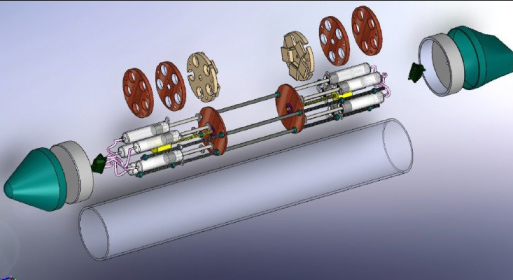AUG Design ESTIMA
PS: This is a project based on a problem that I came across while modelling the constraints, equations and analysing CFD simulations used for designing the body of a Glider during my Summer Internship at an Underwater Robotics based company.
Introduction
Isn’t running CFD simulations every time a glider needs to optimize a certain performance aspect too hectic or just less on ROI The scope of this project is as narrow as the last unexplored frontier itself—the deep underwater domain. Despite the exponential rise of aerial and space autonomy tools, we still lack robust, modular, and data-driven tools for optimizing and designing Autonomous Underwater Vehicles (AUVs).
In particular, Autonomous Underwater Gliders (AUGs)—which operate by changing buoyancy and exploiting hydrodynamic lift—pose a unique challenge for simulation and iterative design. Current development workflows rely heavily on computationally intensive CFD (Computational Fluid Dynamics) simulations or simplified design heuristics, which are not scalable or intelligent enough for rapid prototyping.
This is where the idea behind AUG Design ESTIMA was born.
🚀 Project Motivation
While researching tools for conceptual design and performance estimation, I came across AI-guided aerodynamic optimizers developed for aircraft design—particularly those that use data-driven approaches to evaluate drag, stability, and energy efficiency from shape and control parameters.
These are widely used by space and defense organizations to reduce the dependency on expensive real-time CFD simulations. Unfortunately, no such ML-accelerated system exists for underwater vehicles despite their growing importance in naval, climate, and research domains.
🎯 Objective
To build an ML-powered tool that can predict performance metrics and advise design modifications for AUGs based on training over CFD-like simulation data. This reduces the need to run thousands of costly simulations every time we tweak a control surface or modify mass distribution.
“Instead of running a full simulation for each iteration, why not learn from simulations and estimate the optimal design space?”
⚙️ How It Works
1. Simulator as a Ground Truth Engine
We use the AUG Simulator developed by Bhaswanth Ayapilla to generate performance data for various design parameters such as:
- Buoyancy frequency
- Mass center offset
- Wing area and angle
- Control delay
- Hydrodynamic damping coefficients
This simulator provides high-fidelity outputs like pitch stability, energy consumption, glider range, and controllability.
2. Data Collection Pipeline
A script batch-generates parameter combinations, executes the simulator for each, and stores:
- Input configuration parameters
- Output performance metrics (travel distance, energy loss, etc.)
- Stability indicators (convergence, steady-state error)
We also label configurations with a “quality score” based on a multi-objective evaluation function prioritizing:
- Max distance per energy unit
- Stability over long durations
- Smooth trajectory
3. ML Model Training
We train ML regression models (currently experimenting with XGBoost, Random Forest, and Neural Networks) to learn the inverse mapping from:
Desired Performance ➝ Design Parameters
Input:
- Desired motion profile
- Max allowable energy consumption
- Required range and operational depth
Output:
- Estimated optimal parameter configuration
- Predicted performance (with confidence)
This inverse design model helps find viable configurations quickly, which can later be refined using traditional simulation or evolutionary search.
🧠 Future Work
- 🧪 Integrate active learning to optimize sample efficiency
- 🔁 Add a generative design loop for shape prediction
- 🧼 Add explainability and constraints to ensure physical feasibility
- 🌊 Extend to ROVs and other AUV types
📌 Repository Structure
| Directory | Description |
|---|---|
sim_interface/ | Scripts to run the AUG Simulator with various parameter sets |
data/ | Cleaned dataset of configurations and outcomes |
models/ | Trained ML models and hyperparameter configs |
notebooks/ | Jupyter notebooks for visualization and training |
docs/ | Technical writeups, plots, and methodology notes |
🙌 Collaboration & Contact
I’m actively seeking collaborators who are working in:
- Marine Vehicle Simulation & Optimization
- AI for Physical Systems
- CFD + ML pipelines
- Underwater Robotics
If you’re building in this space, let’s connect!
💬 Final Thoughts
With the rise of autonomy across domains, underwater remains one of the most challenging and underexplored environments. This project is a small step towards creating intelligent co-pilots for marine vehicle design. If even a few researchers or developers benefit from this tool and accelerate their development loop, that would be a win.
Let’s build smarter systems — even beneath the waves 🌊
🔗 GitHub: AUG Design ESTIMA
💡 Tech Stack: Python, Scikit-learn, XGBoost, Matplotlib, AUG Simulator
⚡ Related: #UnderwaterRobotics #MachineLearning #AUV #DesignAutomation #RoboticsEngineering
